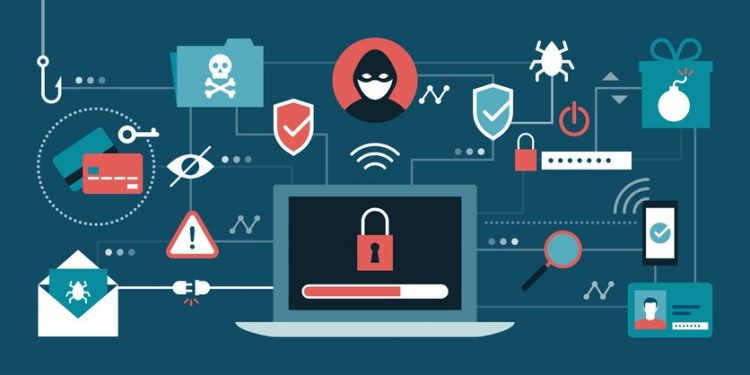As technology evolves at breakneck speeds and the cyber landscape becomes increasingly complex, vulnerability detection has emerged as a crucial component in safeguarding information systems. But, why is it so important and what role does it play in today’s tech landscape? This blog post delves into the significance of vulnerability detection, its various facets, and why it should be on the radar of every organization and individual.
Understanding Vulnerability Detection
Vulnerability detection refers to the process of identifying weaknesses and potential threats in computer networks, applications, and systems. It is an essential aspect of cybersecurity and aims to prevent unauthorized access, data breaches, and other malicious activities. With the ever-expanding tech landscape and the increasing sophistication of cyber-attacks, vulnerability detection has become a top priority for organizations worldwide.
Relevance of Vulnerability Detection in Today’s World
In the current tech landscape, vulnerability detection is of paramount importance for several reasons:
- Data breaches: The frequency and magnitude of data breaches are on the rise, with new incidents being reported daily. Vulnerability detection helps identify potential points of entry for attackers, and in turn, prevent such breaches.
- Compliance requirements: Organizations handling sensitive information are often subject to strict compliance guidelines. Vulnerability detection assists in adhering to these requirements, ensuring that security protocols are up-to-date.
- Brand trust and reputation: Cyber incidents can cause significant damage to a brand’s reputation and cause customers to lose trust in the organization. Proactively identifying and addressing vulnerabilities can help in maintaining strong public relations.
Vulnerability Management Programs
Establishing a comprehensive vulnerability management program is a vital part of any organization’s security posture. An effective program includes the identification, evaluation, and remediation of vulnerabilities, as well as ongoing monitoring and maintenance. A robust vulnerability management program ensures a proactive approach to managing risks and plays a significant role in reducing the likelihood of successful cyber-attacks.
The Role of Threat Intelligence
Threat intelligence plays an essential role in vulnerability detection by providing insights into the latest trends, attack vectors, and threat actors. By incorporating threat intelligence into vulnerability detection processes, organizations can gain an understanding of the current threat landscape and prioritize the remediation of vulnerabilities that pose the most significant risk. This helps optimize resource allocation and improve the effectiveness of an organization’s overall cybersecurity strategy.
Collaboration and Information Sharing
Effective vulnerability detection is not an isolated process; collaboration and information sharing are crucial for staying ahead of the curve in the ever-evolving cybersecurity landscape. Organizations can benefit from participating in industry-specific information sharing and analysis centers (ISACs), where they can share cybersecurity information and collaborate to identify and address common threats. By establishing a culture of information sharing, organizations can leverage the collective knowledge and expertise of their peers to improve their vulnerability detection processes.
How Vulnerability Detection Works
Vulnerability detection can be carried out in various ways, including:
- Automated scanning tools: These tools crawl through systems and networks, searching for known vulnerabilities in the software and applications being used. They usually leverage databases of documented issues to detect possible threats.
- Manual testing and analysis: Cybersecurity experts can manually analyze configurations, code, and system components to identify potential vulnerabilities. This method usually complements the automated approach, as human expertise can catch issues that may be missed by automated tools.
- Penetration testing: Also known as ethical hacking, penetration testing is an approved and controlled attack on a system, with the goal of uncovering security weaknesses. This simulation provides valuable insight into how an actual attacker might exploit vulnerabilities in the system. Penetration testing service is provided by IT companies, and today it even comes in the form of cloud service.
One effective way to improve vulnerability detection in applications is to leverage fuzzing automation as part of the development and testing process. Automated fuzz testing tools can help uncover vulnerabilities before deploying applications, reducing the risk of security breaches and increasing overall software security.
The Need for Continuous Vulnerability Detection
Though having a single instance of vulnerability detection in place might seem sufficient, it’s crucial to understand that the cyber landscape is continuously changing. Consequently, implementing ongoing vulnerability detection processes ensures that organizations are sufficiently protected from evolving threats. This includes regular scanning and assessment, updating security software and systems, and keeping abreast of emerging threats and trends.
Challenges in Effective Vulnerability Detection
Despite the importance of vulnerability detection, there are several challenges when implementing an effective process:
Resource constraints: Organizations often struggle with limited resources, making it tough to allocate the necessary time and manpower to vulnerability detection.
- False positives and negatives: Automated tools may yield false positives, incorrectly identifying a vulnerability, or false negatives, failing to detect an existing one. This underscores the importance of manual testing and expertise in the process.
- Keeping up with emerging threats: With new security risks continually emerging, it can be a daunting task to stay abreast of the latest vulnerabilities, patches, and best practices.
Conclusion
Vulnerability detection is an integral aspect of protecting computer networks, applications, and systems in today’s complex tech landscape. By understanding its importance and incorporating it into an organization’s security processes, we can mitigate risks, maintain compliance, and safeguard brand reputation in the face of, technological advancements and ever-evolving threats.
Follow Techdee for more!





